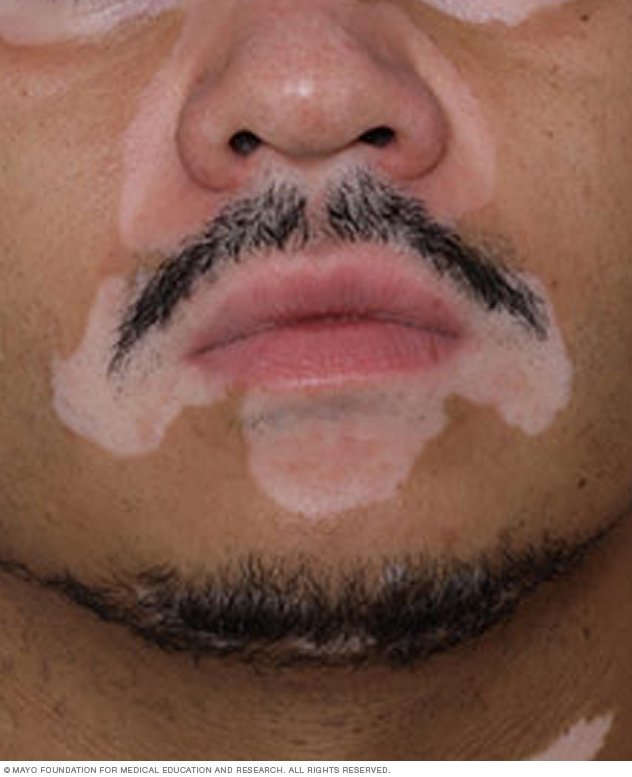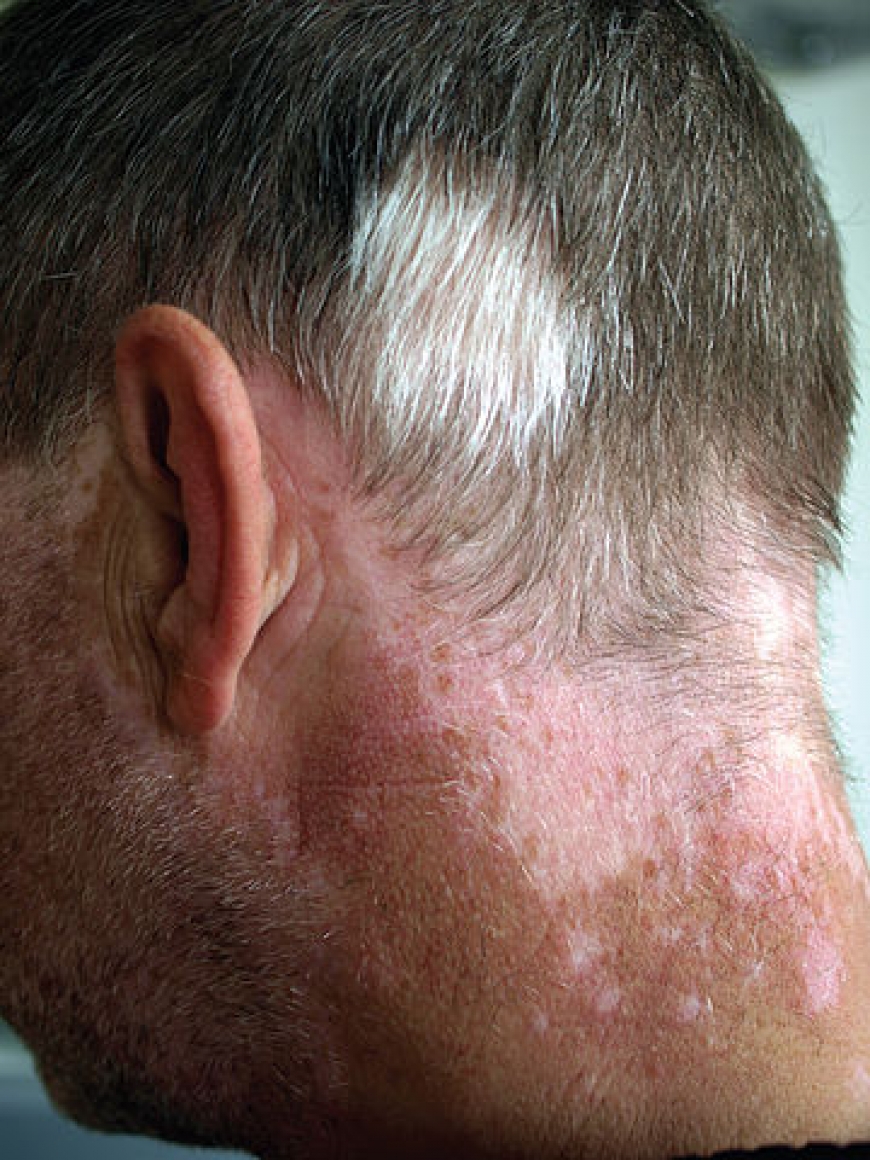Vitiligo Hair: Symptoms, Treatment, and Causes
Table Of Content

Dermatologists offer treatment that may restore lost skin color. Both conditions cause white or light patches of skin or hair. Piebaldism occurs when a portion of your skin doesn’t have melanocytes, which are cells that produce pigment (melanin). Vitiligo occurs when your body has melanocytes, but they’re destroyed. Vitiligo can change your appearance but rarely causes serious disease or complications. Lack of color in the skin or hair is the most common symptom.
Symptoms
Barbie's latest Fashionista line features dolls with vitiligo, no hair - TODAY
Barbie's latest Fashionista line features dolls with vitiligo, no hair.
Posted: Sat, 08 Feb 2020 08:00:00 GMT [source]
Depigmentation removes the remaining natural color, creating an even skin tone. To remove the remaining color from their skin, a patient applies a cream to the areas of skin that still have pigment. It can take one to four years to get rid of the remaining pigment. If light therapy is an option for you, you will need a number of treatments. In everyday lighting (A), the vitiligo on this patient’s skin is less visible. When examined under different types of Wood’s lamps (B and C), the patches are easier to see.
How do clinical features vary in differing types of skin?
However, clinical photographs may be taken to monitor the condition. The American Academy of Dermatology gratefully acknowledges the support from Incyte Dermatology. You can search by location, condition, and procedure to find the dermatologist that’s right for you.
Will my natural skin color return with vitiligo?
About half the people who develop vitiligo get it before they turn 20 years of age. For many of these people, vitiligo begins when they’re a child. Children who develop vitiligo often have a relative with this condition.

Barbie Fashionistas Dolls With Vitiligo and Hair Loss Launched by Mattel - Newsweek
Barbie Fashionistas Dolls With Vitiligo and Hair Loss Launched by Mattel.
Posted: Thu, 30 Jan 2020 08:00:00 GMT [source]
So your health care provider might suggest that you first try changing the appearance of your skin by applying a self-tanning product or makeup. Vitiligo belongs to a group of conditions known as autoimmune diseases. These are ones in which the body's immune system attacks its own tissue or cells—in this case, the melanocytes (pigment cells that give skin its color). There is no clear-cut reason why the melanocytes die, but genetics are thought to play a role. Vitiligo is an autoimmune disease, and what determines whether or not a person develops the condition is a combination of genetic and other factors.
It can be especially difficult for people with darker skin, Dr. Skotnicki says, because the differences in skin tone are more obvious. For people with light skin, the presence of vitiligo may be less noticeable, Skotnicki adds. If you want to treat vitiligo, dermatologists have treatments that can restore lost skin color. People who have vitiligo have a higher risk of developing some other autoimmune diseases like thyroid disease.
One dog owner can attest to this, as their pet dog Buster, a four-year-old black dog from Oklahoma, ended up turning completely white because of vitiligo. People of all races and skin colors can get vitiligo, and the disease occurs about equally in people of all races. While having a close blood relative with vitiligo increases your risk of developing it, not everyone who has vitiligo in their family develops this disease. Some people only get a few small, white patches, but others get bigger white patches that join up across large areas of their skin. It can also sometimes develop where there are hair roots, such as on your scalp. The lack of melanin in your skin can turn the hair in the affected area white or grey.
What to expect from your doctor

Research shows that having an even skin tone can greatly improve both physical and mental well-being. People with this type develop both segmental vitiligo and color loss beyond the area with segmental vitiligo. You may have heard that certain vitamins, minerals, amino acids, or enzymes can restore your natural skin color. Researchers are studying the effects that these may have on vitiligo. More research is needed to know whether any diet or supplements can effectively treat vitiligo. Surgery may be an option for people of all skin tones and for people who have different types of vitiligo.
Also read: Exclusive: Is Homeopathy 'Placebo' And 'Dangerous'? Expert Addresses 10 Common Doubts
Studies on the effect of collagen supplementation on hair growth tend to be in vitro, on animals, or poor quality. People who have gout or other conditions that require them to limit protein intake should avoid collagen supplements. While studies such as these may be a starting point for further research, there is not enough evidence to show collagen supplementation promotes hair growth in humans. There isn't evidence from human studies that collagen taken orally will end up in one's skin, nails, or hair.
It can also help to find a therapist who understands this skin condition and its impact on mental health can also be helpful. Other common areas for pigment loss are in body folds, like the skin under the arms and around the groin. While genetic and autoimmune factors play a significant role in the development of vitiligo, environmental triggers may also be necessary for the onset of the condition. Vitiligo can be difficult to treat since the progression of the disease varies so much depending on the case. Sometimes the patches stop forming without treatment, but often pigment loss spreads. While new patches of vitiligo are still appearing, the condition is "active." For many patients, new spots stop developing after a certain amount of time (from months to years).
Vitiligo is believed to be an autoimmune condition, where the body’s immune system attacks and destroys the melanocytes – the cells that produce pigment in the skin. This leads to the depigmentation of the skin and the development of white patches. Vitiligo is a chronic skin disorder that affects an estimated 0.5% to 1% of the world’s population. It occurs when the cells that produce melanin, the pigment that gives color to the skin, die or stop functioning. As a result, the affected area of the skin loses its color and becomes white or lighter in color. The exact cause of vitiligo is not known, but it is believed to be an autoimmune disorder, where the body’s immune system attacks and destroys its own melanocytes.
Comments
Post a Comment